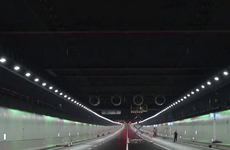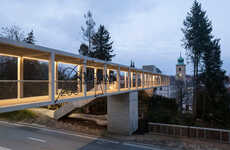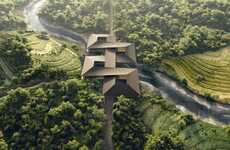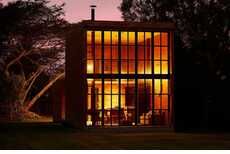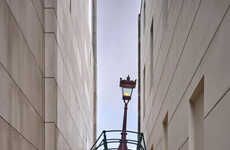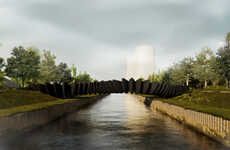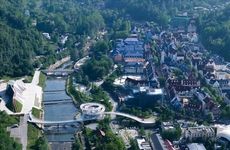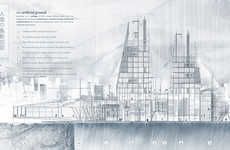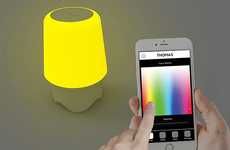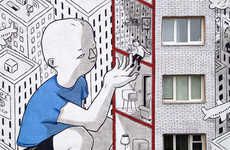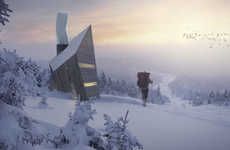
This Proposed Pedestrian Bridge Connects New York City and Jersey City
Christopher Magsambol — October 18, 2015 — Art & Design
References: archdaily
Kevin Shane and architect Jeff Jordan have devised a pedestrian-focused plan that sees a bridge connect New York City and Jersey City. The two main hubs are only a few miles apart but the city roads and bridges force drivers to take much longer trips than they have to.
The bridge is being dubbed as the 'Liberty Bridge' which will allow people to walk and bike across the Hudson River. The bridge will also double as retail, artwork and leisure space. Although rather ambitious, the plan is gaining media attention and a petition for its construction is slowly growing. The bridge will be built on Pennsylvania Railway Embankment, an abandoned ruin in Jersey city. A combination of wood and concrete will form the body of the bridge and will be 5,000 feet in length, and high enough to accommodate passing ships.
The bridge is being dubbed as the 'Liberty Bridge' which will allow people to walk and bike across the Hudson River. The bridge will also double as retail, artwork and leisure space. Although rather ambitious, the plan is gaining media attention and a petition for its construction is slowly growing. The bridge will be built on Pennsylvania Railway Embankment, an abandoned ruin in Jersey city. A combination of wood and concrete will form the body of the bridge and will be 5,000 feet in length, and high enough to accommodate passing ships.
Trend Themes
1. Pedestrian-connecting Bridges - Opportunity to design and construct pedestrian bridges to connect cities currently limited by driving distance.
2. Multi-functional Infrastructure - Incorporate retail, artwork, and leisure into infrastructure projects to enhance societal engagement and functionality.
3. Elevated Biking Infrastructure - Develop elevated biking infrastructure to promote alternative transportation and enhance urban landscapes.
Industry Implications
1. Architecture - Architects can incorporate multi-functional infrastructure designs to revitalize abandoned areas and enhance urban connectivity.
2. Construction - Construction companies can lead efforts to develop bicycle and pedestrian infrastructure projects, creating new opportunities for growth.
3. Tourism - Travel and tourism industries can utilize multi-functional infrastructure designs as an attraction for urban exploration and unique experiences.
1.5
Score
Popularity
Activity
Freshness



